Panduit VS2-AVT-3PF-08 Bruksanvisning
Panduit
Ikke kategorisert
VS2-AVT-3PF-08
Les nedenfor 📖 manual på norsk for Panduit VS2-AVT-3PF-08 (20 sider) i kategorien Ikke kategorisert. Denne guiden var nyttig for 10 personer og ble vurdert med 4.6 stjerner i gjennomsnitt av 5.5 brukere
Side 1/20

VeriSafe
™
2.0 Absence of Voltage Tester (AVT)
Instruction Manual
Lit. No.: B21110
Date: 10/06/2022 Revision: 4 [English]
Model No(s): VS2-AVT Series
Table of Contents
NOTE: In the interest of higher quality and value, Panduit
™
products are continually being improved and updated. Consequently, pic-
tures may vary from the enclosed product.
NOTE: Updates to this Instruction Manual may be available. Check www.panduit.com for the latest version of this manual.
TO REDUCE THE RISK OF INJURY, USER MUST READ INSTRUCTION MANUAL
TM
For a copy of Panduit product warranties, log on to www.panduit.com/warranty
For more information
Visit us at www.panduit.com/verisafe
1002985, B21110_EN_rev4
North America Tech Support:
techsupport@panduit.com
Tel: 866.405.6654
EU Tech Support :
techsupportemea@panduit.com
Tel: 31.546.580.452
Fax: 31.546.580.441
Asia Pacific Tech Support:
techsupportap@panduit.com
Tel:
Singapore: 1-800-Panduit (7263848)
Australia: 1-800-Panduit (7263848)
Korea: 02.21827300
Tech Support
Hazardous Locations .................................2
Safety Information ...................................3
Informations relatives à la sécurité ......................4
System Configuration ...............................5, 6
Components ......................................5
Part Number Identification ...........................5
Power for AVT Test .................................5
DC Power Input ....................................5
Indicator Module ...................................6
Absence of Voltage Outputs ..........................6
Technical Specifications .............................7, 8
Environmental Ratings, Applications ....................7
AVT Power Requirements .............................7
AVT Quiescent Current, Voltage Illumination Level ..........7
Functional Safety ...................................8
Standards and Certifications ..........................8
Dimensions .........................................9
Schematics .....................................10, 11
3-Phase Delta, 3-Phase Wye .........................10
Single Phase .....................................10
DC .............................................11
Installation Considerations ...........................12
General Information ................................12
Effect on SCCR ...................................12
Use of Overcurrent Protection ........................12
Installation Instructions ...........................13, 14
Commisioning Checklist ..............................15
Operating Instructions ...............................16
Troubleshooting ....................................17
Maintenance ....................................18, 19
Warranty ..........................................20
The VeriSafe
™
2.0 Absence of Voltage Tester (AVT) is a permanently-mounted tester that is used to verify a circuit is de-energized prior
to opening an electrical enclosure. Once installed, a push of a button enables personnel who have been trained on the operation of the
tester to verify the absence of voltage and see an active indication when the absence of voltage is confirmed.
The VeriSafe
™
2.0 AVT safety function tests for absence of voltage. When the voltage is verified below 3VAC and 3VDC, the green
absence of voltage indicator illuminates and the external outputs activate for 5 seconds.
Produkspesifikasjoner
| Merke: | Panduit |
| Kategori: | Ikke kategorisert |
| Modell: | VS2-AVT-3PF-08 |
Trenger du hjelp?
Hvis du trenger hjelp med Panduit VS2-AVT-3PF-08 still et spørsmål nedenfor, og andre brukere vil svare deg
Ikke kategorisert Panduit Manualer
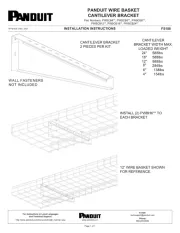
19 Oktober 2025
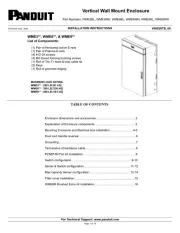
19 Oktober 2025
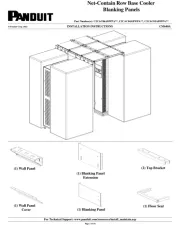
31 August 2025

31 August 2025

31 August 2025

31 August 2025

30 August 2025
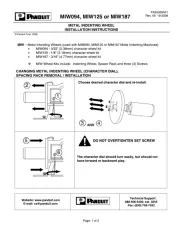
30 August 2025
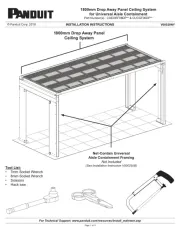
30 August 2025
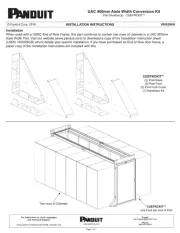
30 August 2025
Ikke kategorisert Manualer
- Ozito
- Beaphar
- Dorr
- Livington
- Plasma Cloud
- Brilliant
- R-Go Tools
- Baby Lock
- REMKO
- Godrej
- Sharkoon
- Oregon Scientific
- IK Multimedia
- Extech
- Sparkle
Nyeste Ikke kategorisert Manualer
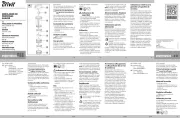
23 Oktober 2025
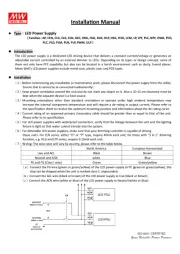
23 Oktober 2025
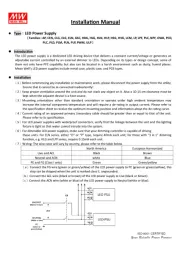
23 Oktober 2025

23 Oktober 2025
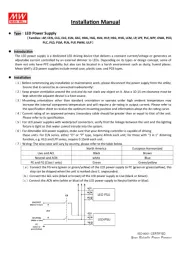
23 Oktober 2025

23 Oktober 2025
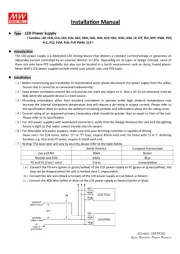
23 Oktober 2025

23 Oktober 2025
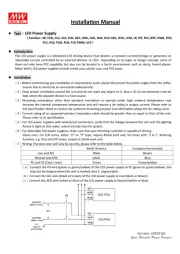
23 Oktober 2025
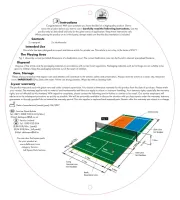
23 Oktober 2025